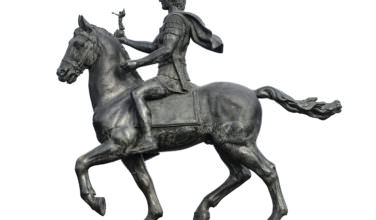History of the Jewish People in Greece
Comments Off on History of the Jewish People in Greece
 The presence of the Jewish people dates back several centuries in Greece. Though the community flourished for a long time in Greece, especially in the cities, it did experience some dark times. World War II Era in particular was not kind to this population. Here’s more information about this part of Greek history:
The presence of the Jewish people dates back several centuries in Greece. Though the community flourished for a long time in Greece, especially in the cities, it did experience some dark times. World War II Era in particular was not kind to this population. Here’s more information about this part of Greek history:
About the Romaniotes
Also known as Greek Jews, the Romaniotes are the oldest Jewish group that inhabited Greece. Their presence in Greece dates to the 4th century BC. “Greek Jew” is a term that refers to a person of Jewish descent or Jewish faith that originates from or lives in the modern region of Greece.
The Romaniotes are a Jewish community that is native to the Eastern Mediterranean and the oldest in all of Europe. They spoke a language known as Judaeo-Greek (Yevanic), which is a Greek dialect that included Hebrew as well as Turkish and Aramaic words. Romaniotes today speak modern Greek or the language of the country they live in. Larger communities of Romaniotes lived in Thessaloniki, Volos, Corinth, and Arta to name a few, as well as on the islands of Cyprus, Rhodes, Zakynthos, and Corfu.
Sephardic Jews were the majority in Greece. These are the Jews whose ancestors came to Greece from Italy, Portugal, and Spain. Sephardic Jews mainly settled in larger cities including Thessaloniki, which would be called “Mother of Israel” in the future. They spoke a dialect known as Judeo-Espaniol and were known for their level of education.
Judaism in Greece
Judaism in Greece was first recorded around 300-250 BC on Rhodes. Ancient synagogues that date back to the 2nd century BC were discovered by archaeologists. Jews played an important role in the history of Greece through the Byzantine Empire and Ottoman Greece as well as during WWII.
During the Hellenistic Period, the Jews of Alexandria created a wonderful fusion that combined Jewish and Greek cultures. At the same time, the Jews of Jerusalem were divided between pro-Hellenic and conservative factions.
During the Byzantine Empire, the leadership of the empire in Constantinople, emperors mainly, were eager to take advantage of the Jew’s wealth. To do this, they imposed taxes on them. They also made an attempt to convert Jews to Christianity, but this was met with resistance.
During Ottoman Greece
In 1519, during the Ottoman Empire, Jews represented 56% of the population in Thessaloniki. In 1613, this rose to 68%. The Mihag of the Jews was printed in the first edition of the Mahzor Romania in 1523. The Mihag represents the oldest European prayer rite. In 1547, a polyglot edition o the Bible was published in Constantinople and contained the Hebrew text in the middle of the page along with the Judaeo-Spanish translation to one side.
Change would come to the Greek Jewish life during the middle of the 19th century. In Thessaloniki, the Sephardic population had grown to about 30,000 people and this lead to hygiene issues, fires, and lack of resources. Luckily toward the end of the century, leadership was coming into play and this meant new trade opportunities with Europe.
Source:
Categorized in: Modern Greek History
This post was written by Greek Boston





